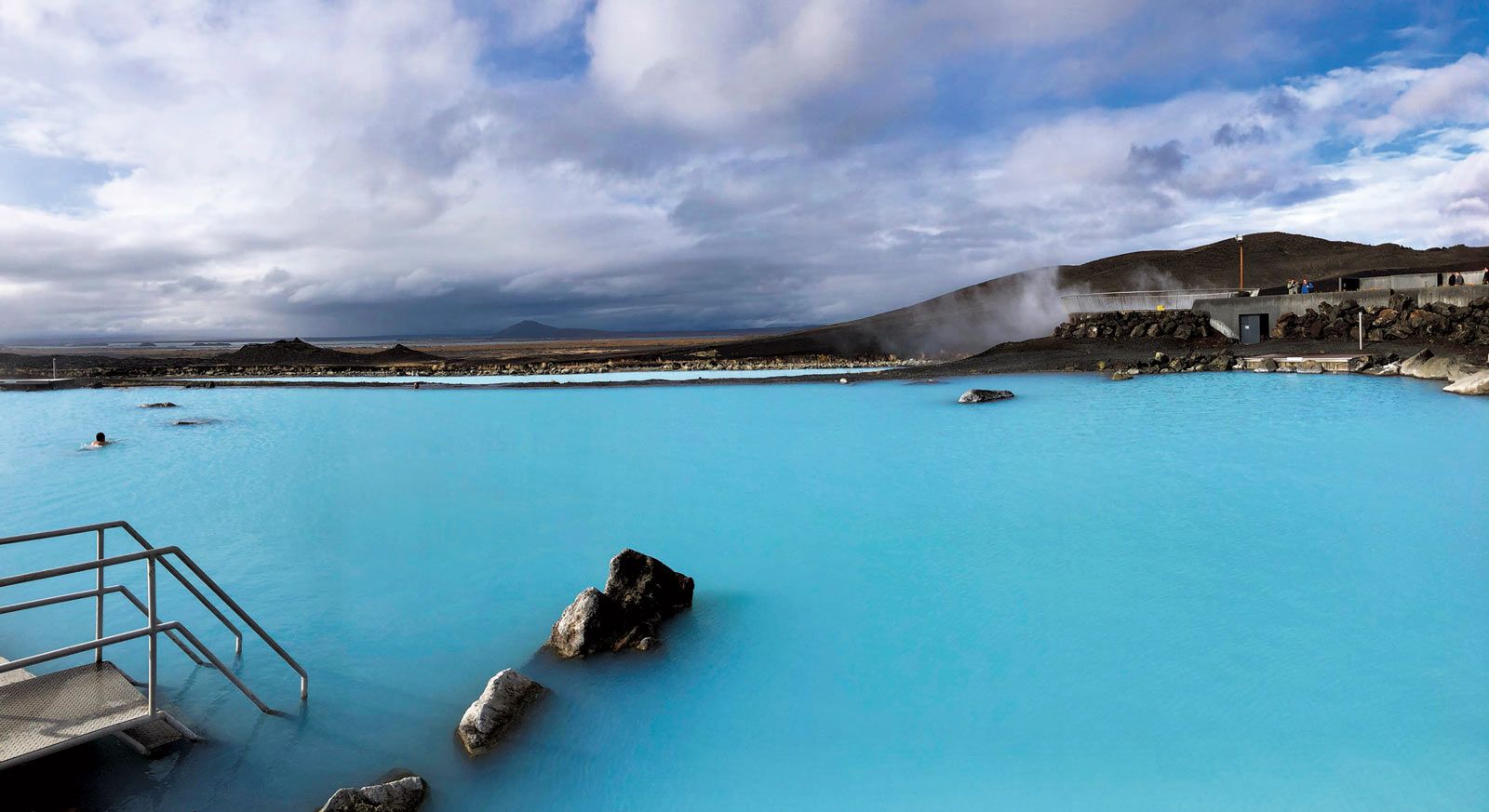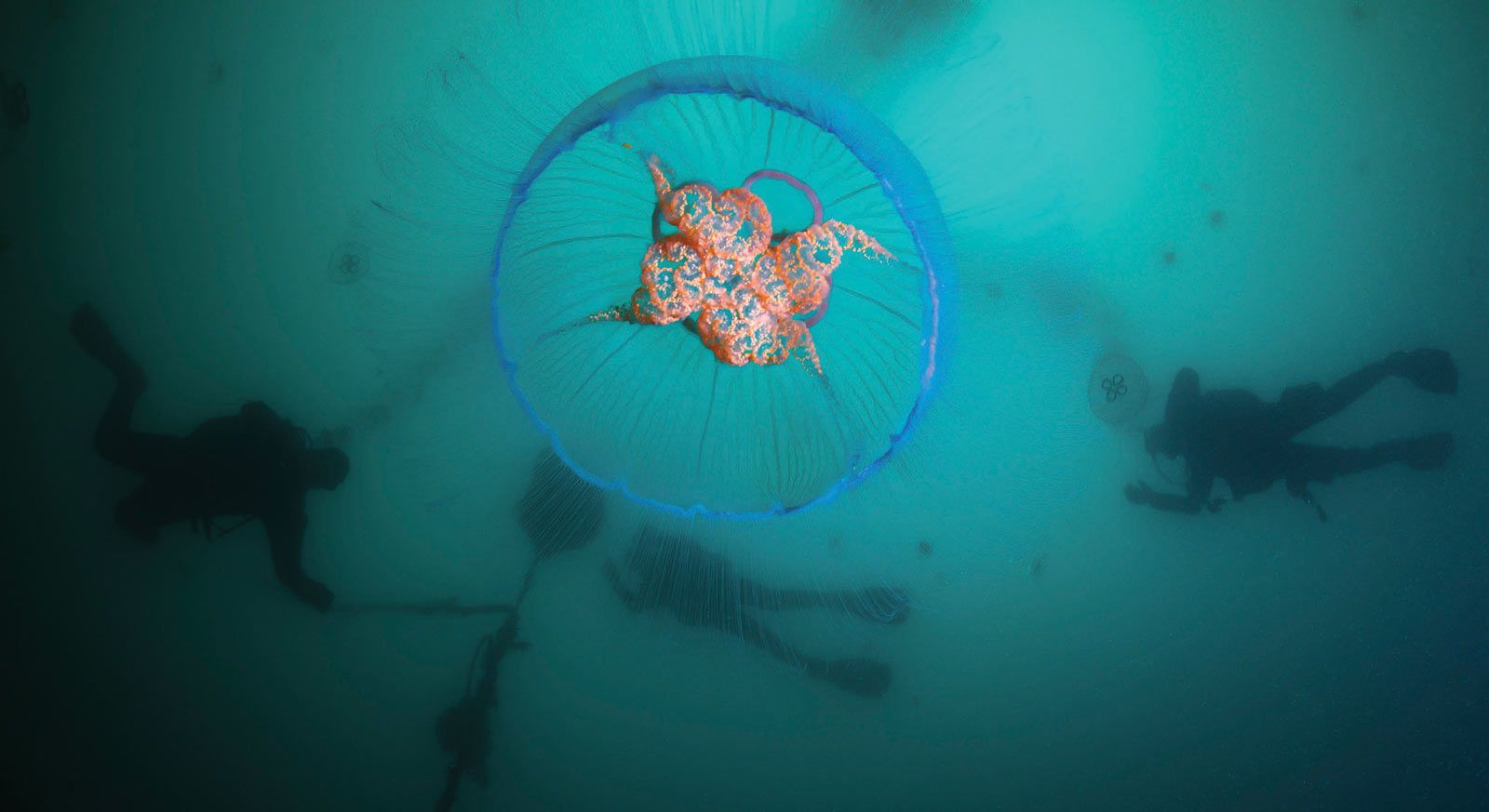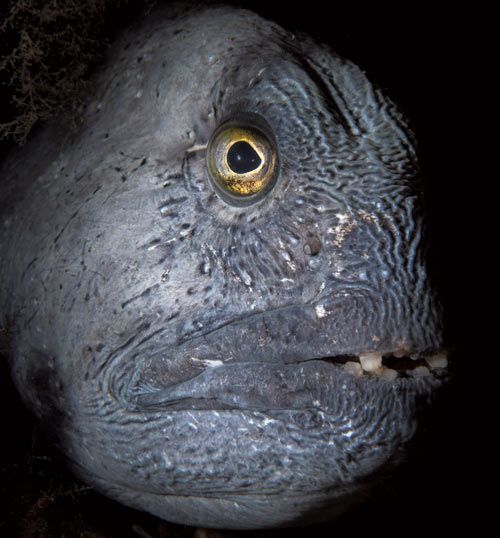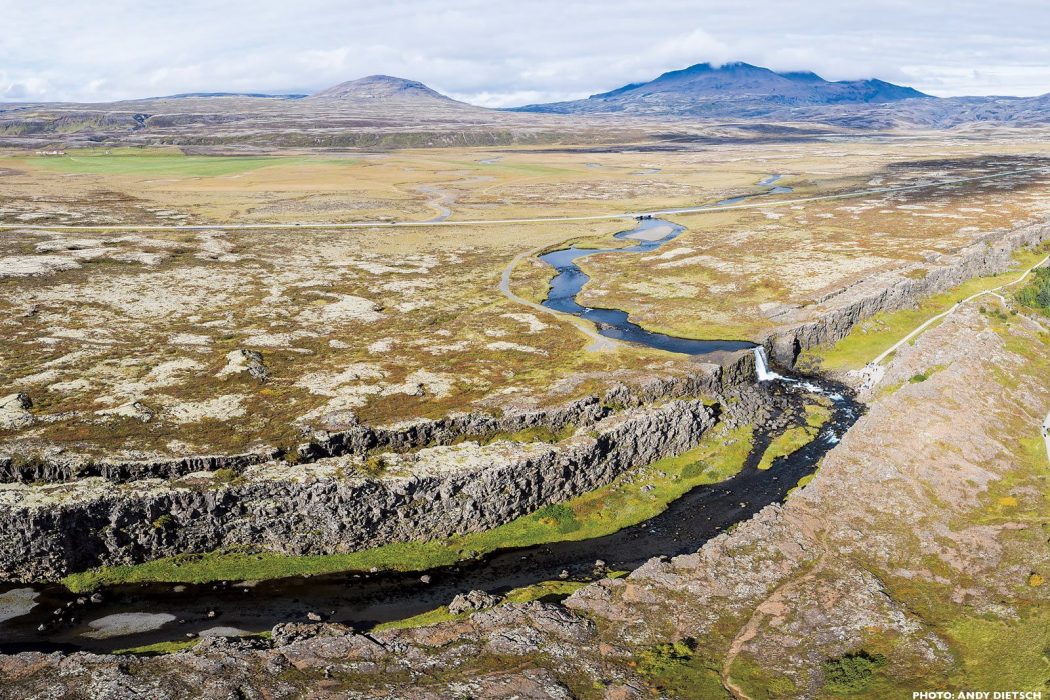To be completely honest, scuba diving in Iceland had never really been at the top of my bucket list. “The water is too cold!” I thought. I prefer tropical locations. Water temperatures at my local dive site in upstate New York drop to the high 40s Fahrenheit (8 Celsius), but I’ve never dived in water close to freezing. However, late last summer I received a call from a friend who had a last minute cancellation on a trip that included both topside tours and scuba diving in Iceland. She asked if I was interested. “Are you sure there’s enough for my wife (a warm water diver) to do?” I asked. “Absolutely,” she insisted. So after a short conversation with my wife, we booked the trip and started planning for our adventure.
Fire and Ice
Iceland is often referred to as “The Land of Fire and Ice” and for very good reason. Just south of the Arctic circle where the North American and Eurasian tectonic plates meet, Iceland is home to numerous active volcanoes, geysers and thermal springs. In fact, while driving through the countryside, it’s almost impossible to miss the geothermal activity as wisps of steam curl upwards from cracks and crevices in the ground. The topside scenery changes drastically within a few miles and feels otherworldly. The landscape resembles a Hollywood set. For Game of Thrones fans, many parts of Iceland will look familiar since the show was shot on location.
Iceland remained one of the world’s largest uninhabited islands for quite some time. There’s some archaeological evidence that a few Irish monks had lived there prior to the arrival of Norwegian Vikings in 870 AD.
When the settlers arrived in Iceland, they brought their belief in Norse mythology. They worshiped the Norse gods including Odin and Thor. Icelanders further developed the folklore with fantastic fables of trolls, elves, Yule Lads and other fanciful creatures. These stories were passed down from generation to generation and have become embedded into Icelandic culture. In fact even today, trolls and elves are often blamed for unexplained phenomena. Recent polls have found that 54 percent of Icelanders either believe in elves or think it’s possible that elves exist.
In the 13th century a civil war broke out between fighting clans and ultimately, Iceland came under Norwegian and then Danish rule. In 1918, under the Danish-Iceland Act of Union, Denmark gave Iceland sovereignty while continuing to protect it and represent it in foreign affairs. Although still a sovereign nation, Iceland had signed a personal union with the King of Denmark. That union expired 25 years later and in 1944, Icelanders voted overwhelmingly to abolish the union with Denmark and become an independent republic.
At the beginning of the 21st century, Iceland was becoming one of the most prosperous nations in the world. Investment banking and financial services were contributing significantly to its gross domestic product (GDP). When the world financial crisis hit in 2008, all three of Iceland’s privately held commercial banks defaulted. Iceland experienced a severe economic depression between 2008 and 2010 and there was political unrest in the country. In 2011, as a result of emergency legislation passed by the Icelandic parliament as well as backing by the International Monetary Fund, Iceland began to once again see economic growth. By mid-2012 the country was one of Europe’s recovery success stories. Today, Iceland is prospering economically and benefiting from a resurgence in tourism.
RELATED READ: FAR AND WIDE – AND DEEP: A PRIMER ON ADVENTURE TRAVEL FOR DIVERS
Geology
Iceland was formed roughly 20 million years ago from a series of volcanic eruptions along the Mid-Atlantic Ridge. The country has 130 volcanoes of which 30 are still active. The landscape is still changing, even today. In 2010, the volcano Eyjafjallajökull erupted, belching tons of ash thousands of feet into the air and disrupting air travel for weeks. Located in the south of Iceland, Eyjafjallajökull is often referred to as the much easier to pronounce E15 (E followed by 15 letters).
Iceland pioneered the use of geothermal energy moving away from importing peat and coal in the latter half of the 20th century. Today, roughly 85 percent of primary energy use in Iceland comes from indigenous renewable resources and 66 percent of that is from geothermal.
Approximately 11 percent of Iceland is covered in ice. The country has 269 named glaciers. Glaciers are rivers of ice formed when snow falls but doesn’t melt and, instead, accumulates over hundreds of years. This ice is so heavy that it begins to push the bottom layers outward and the ice itself flows like an extremely slow river. As the glaciers flow over the landscape, they grind away at the rock and soil beneath them. The meltwater from the glaciers forms rivers and waterfalls. The combination of volcanic activity, glacial movement and river erosion has helped to shape the unique landscape in Iceland.

The waters in Iceland’s naturally heated geothermal pools appears unnaturally blue. Photo by Andy Dietsch.
Topside Activities
Like many diving locations around the world, Iceland offers a range of topside recreational diversions. One of the most popular trips among tourists is the Golden Circle Tour which takes travelers from Reykjavik on a 190 mile (1,915 km) loop through Southern Iceland visiting waterfalls, geysers and Thingvellir National Park. These tours normally last eight hours and are highly recommended.
During the fall or winter months travel companies offer northern lights tours. These nighttime trips take tourists out into the country beyond the light pollution of the city to see this amazing natural phenomenon.
For the more adventurous, try strapping on some crampons and hiking a glacier. Tailored to one’s level of experience and athletic ability, there are several options available on a number of glaciers around Iceland.
For those interested in a more relaxing experience, bathing in one of Iceland’s naturally heated spas is a must. The water in these geothermally heated pools appears unnaturally blue and is invitingly warm, especially on cold days. There are hundreds of naturally heated spas and hot tubs around Iceland. Outside of Reykjavik is the Blue Lagoon spa which is very popular but also quite expensive and crowded. For a more local experience, the Mývatn Nature Baths in the north of Iceland is a nice option.
Scuba Diving in Iceland
Most tourists go to Iceland just for the topside scenery and for many, there is more than enough to see and do. We, however, are divers, and Iceland offers some unique diving opportunities that can’t be found anywhere else on the planet. While there are some dives available for open water divers, having an advanced diver certification provides many more diving opportunities. Also, due to the cold water in Iceland, a drysuit is required for most dives.

The Silfra Crack dive site is world famous because it allows divers (and snorkelers) to touch two continents underwater at the same time. Photo by Andy Dietsch.
Silfra
Silfra Crack, considered to be one of the top ten best dives in the world, is a must do dive when visiting Iceland. The dive site is located in the southwest part of Iceland within the UNESCO World Heritage Site of Þingvellir (pronounced Thingvellir) National Park, about an hour’s drive east of Reykjavik. The park sits in a rift valley where the North American and Eurasian tectonic plates are diverging at a rate of 2 cm per year. This geologic activity has formed a number of fissures including the Silfra crack which initially appeared in 1789. The Silfra dive site is world famous because it allows divers (and snorkelers) to touch two continents underwater at the same time.
Approximately 37 miles (60 km) north of Silfra lies Langjökull, Iceland’s second largest glacier. As water from Langjökull melts, it makes its way towards Silfra, moving very slowly as it’s filtered through porous volcanic lava rock. It takes up to a century for the water to finally arrive at the Silfra crack where it is crystal clear and very cold. Water temperatures range between 35.6 degrees F to 39.2 F (2 to 4 degrees C) depending on the time of year. The water has been filtered so well that visibility is over 300 feet (91 m)! This extreme underwater visibility and the ability to touch two continents are what makes Silfra so special. Due to the extremely cold water, all divers are required by law to wear a dry suit. Divers must have a dry suit certification and a logged dry suit dive within two years or at least 10 logged dry suit dives within two years. Written proof from a diving instructor is required. Snorkelers, on the other hand, aren’t required to have any drysuit experience and some companies offer a wet suit snorkel tour, but brrr…
RELATED READ: DIVING DRY: HOW TO DON A DRY SUIT
Only three divers and a guide are allowed in the water at a time, due to national park policy. This gives each group a much better experience and allows photographers an opportunity to capture images of the crack without people wrecking their shots. We sit on the benches that line the waiting area and wait our turn. Byron, owner of Magma Dive, delivers a cup of water he had just pulled from the fissure and says “Try this. It is the freshest water you will ever taste.” I take a sip. The water is cool and refreshing. Our turn finally arrives and we make our way down a metal staircase onto a platform where we stand in knee-high water. I pull the 11-mm hood over my head. It’s new, purchased just for this trip and it feels tight around my face and jaw. With dry gloves on, I need help to pull the sides of the thick hood away to allow my mask to seal correctly on my face. After a few adjustments and a buddy check, we are ready. I descend the two steps from the platform and slip into the very cold, crystal clear water.
I let the air out of my BC and descend. My face and lips go numb pretty quickly, but I soon forget about the cold. I had seen photographs in magazines and online but nothing prepares me for the magnificent sight that now lays before me. The azure blue of the water is unlike anything I’ve see and I’m in awe as I swim between the giant boulders separating two continents. There is a weak current that pushes us along and I use minor frog kicks to adjust my position in the water as we move through the fissure at an average depth of 25 feet (7.5 m). I periodically turn around to view where we have been and, with the incredible visibility, we never lose sight of the platform and the next group of divers waiting for us to turn the corner.
It takes us about 30 minutes to swim the 790 feet (241 m) and while my body core is still warm, my fingers are smarting from the ice cold water — but by the time we walk back to the parking lot and switched tanks I’m ready to go again! This time, I feel no anxiety and I am full of excitement!

Strýtan offers a unique opportunity to dive the only hydrothermal vents in the ocean that are within scuba diving limits. Photo by Andy Dietsch.
Strýtan
In northern Iceland, approximately 13 miles (21 km) up Eyjafjordur fjord north of the town of Akureyri is the Strýtan Dive Center, owned and operated by Erlendur Bogason. Strýtan offers a unique opportunity to dive the only hydrothermal vent that is within scuba diving limits. Hydrothermal vents are formed when breaches in the seafloor pour out geothermally heated water. In some cases, including at Strýtan, the dissolved minerals in water issuing from the vent precipitate as the warm water hits the cold ocean water and a chimney is built up around the vent. There are hydrothermal chimneys in other parts of the world but they are all located at depths greater than 6,500 feet (1,981 m), visited only by deep submersible vehicles such as Woods Hole Oceanographic Institute’s DSV Alvin.
Originally discovered hundreds of years ago by fishermen, Strýtan was taken off the navigational charts in 1987 when the Icelandic Coast Guard couldn’t confirm the location of the chimneys by using sonar. Ten years later, Erlendur Bogason and his friend Árni Halldórsson went on a quest and successfully rediscovered the hydrothermal vents. There are now two dive sites known as Strýtan and Little Strýtan. Both of these dive sites are accessed by fast boat and are for advanced divers with good buoyancy control.
Arnarnesstrýtur, also referred to as Little Strýtan, is a great place for a checkout dive. With a maximum depth of 75 feet (23 m), this dive site has a cluster of hydrothermal chimneys forming a mound roughly 100-foot square (30 m) and 25 feet (7.6 m) tall with small hydrothermal vents on the top. Out of these hydrothermal vents flows 174-degree F (79-degree C) fresh water. A large variety of flora and fauna can be found around this mound. Especially plentiful are nudibranchs and friendly cod and pollock. Atlantic wolffish with their gnarled faces, typically found hiding in their dens at the base of the mound, peek out. For lucky divers there is the possibility of seeing a large lumpfish swimming around. Water temperatures here hover around 45 degrees F (7 degrees C) so, while certainly not tropical, it feels warmer than diving at Silfra.
The hydrothermal chimney at big Strýtan is estimated to have been formed around 10,000 years ago. Located in the middle of the fjord and at a depth of 213 feet (65 m), the chimney rises 165 feet (51 m) towards the surface. From the top of the chimney, spewing at a rate of 26 gallons (98 l) per second is 162-degree F (72-degree C) fresh water. As this hot, fresh water meets the cold salt water of the North Atlantic, dissolved minerals precipitate, building a new layer that appears white on the chimney.

Atlantic wolffish. Photo by Andy Dietsch.
Nesgjá
An hour and a half drive from Akureyri, the Nesgjá Fissure is less known but sometimes referred to as “Little Silfra.” It was formed by activity from the Mid-Atlantic Ridge tectonic plate which also is responsible for the creation of Silfra. This crack, located in a farmer’s field is shallower than Silfra (10 to 15 feet deep [3 to 4.5 m]) and has a much more chiseled appearance to the basalt rock that lines each side of the crack. The 35-degree F (1.7-degree C) glacial meltwater that flows into Nesgjá comes from Vatnajökull, Europe’s largest glacier located some 90 miles (145 km) to the south.
Nesgjá is more easily snorkeled than dived. To access the start of the fissure requires gearing up on the side of the road then hiking roughly 1,000 feet (305 m) through a field. Once at the start of the crack, it’s a bit of a climb down some rocks to the entry point. The swim through the fissure is 300 feet (91 m). At times it narrows to where it is possible to touch both sides (the American and Eurasian continental plates). However, doing so can dislodge algae that grow on the rock. Therefore, it’s best to do this delicately so as not to disrupt the 300-foot (91 m) visibility for those that follow. There is a constant slow current in the fissure which clears up visibility in short order if one does accidentally muck things up.
Litlaá
Litlaá (Little River in Icelandic) is a snorkeling site a short drive from Nesgjá. It doesn’t look like much from the road but a wonderful surprise awaits when entering the water. Even though the river is located just south of the Arctic circle, the water temperature is around 66 degrees F (19 C), heated from geothermal activity. Beyond the shallow shores of the river, through lush grasses growing in the muddy bottom, the river deepens to eight feet (2.4 m) and the bottom becomes sandy. Warm water rising from the ground churns the river bottom in places so that it resembles a bubbling cauldron of mud. Various designs are formed in the river bottom as the different colors of sand dance before ones eyes.
There’s more snorkeling and scuba diving in Iceland than I described here, but this should give you a taste for what’s available. In hindsight, even though Iceland wasn’t on my bucket list, it should have been. I’m glad I checked it off. In fact, I plan on going back at some point for more topside and underwater sights.





